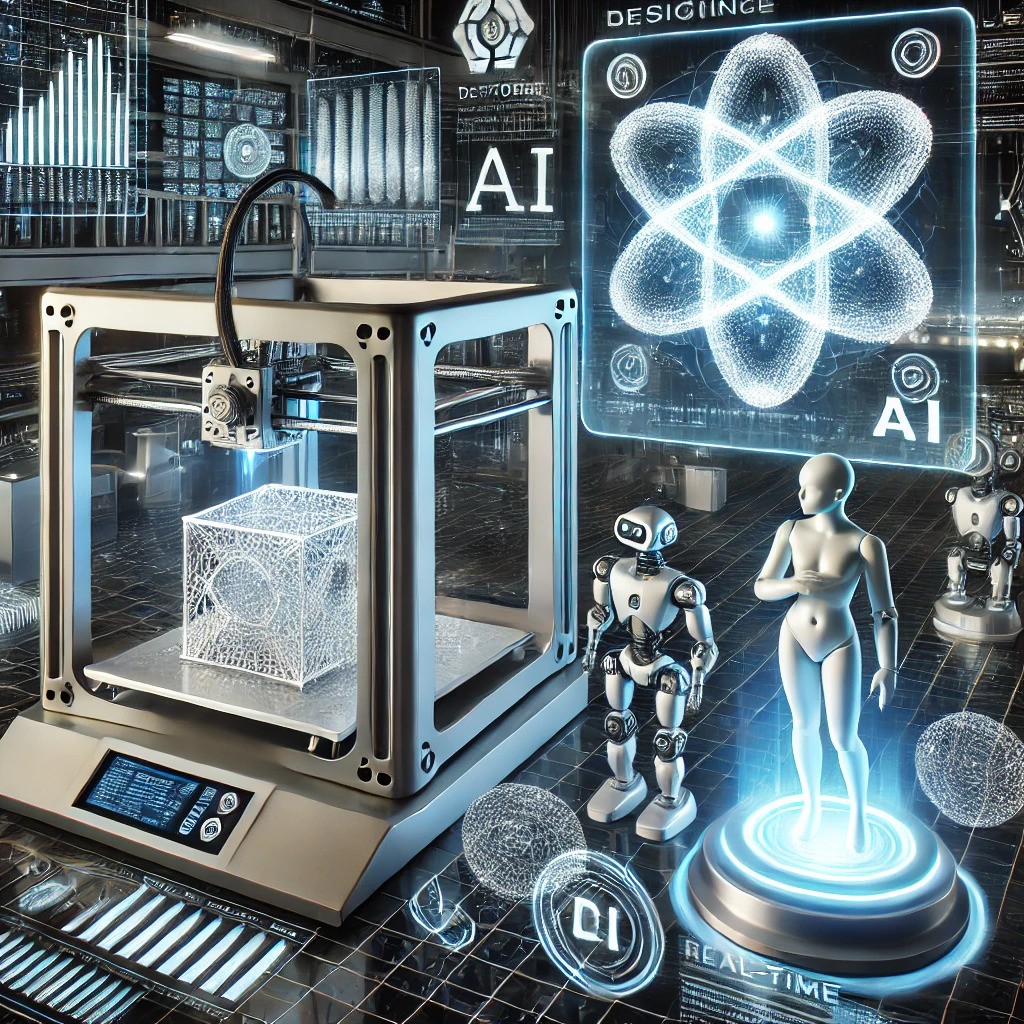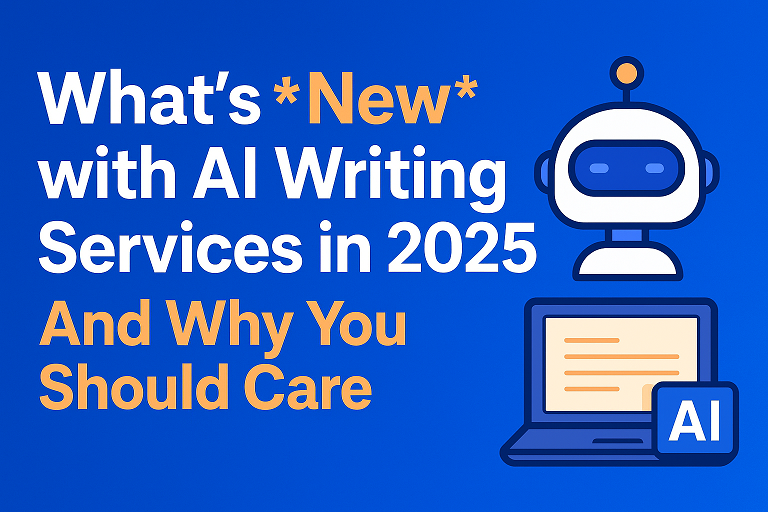The Latest Developments in 3D Printing and AI: Transforming Innovation and Manufacturing
The convergence of 3D printing and AI is revolutionizing industries and paving the way for unprecedented innovations in manufacturing, healthcare, aerospace, architecture, and even consumer goods. As these two transformative technologies advance, they are becoming increasingly intertwined, driving efficiencies, enhancing precision, and enabling capabilities that were unimaginable just a few years ago.
This article explores the latest developments in 3D printing and AI, highlighting cutting-edge breakthroughs, practical applications, and the potential future impacts of these technologies on a global scale.
- What is 3D Printing, and How Does AI Enhance It?
A Brief Overview of 3D Printing
3D printing, also known as additive manufacturing (AM), involves creating three-dimensional objects by layering materials such as plastics, resins, metals, and ceramics based on digital models. The technology enables rapid prototyping, mass customization, and production of complex geometries that traditional manufacturing methods cannot achieve.
The Role of AI in 3D Printing
3D printing and AI play a crucial role in enhancing the capabilities of each other by improving design, optimization, quality control, and process automation. AI algorithms can analyze vast datasets, predict outcomes, and streamline production, leading to:
– Improved Precision: AI-driven tools can optimize printing paths, reducing errors and material waste.
– Design Automation: Generative design powered by AI can produce innovative, efficient, and lightweight structures.
– Quality Control: Machine learning algorithms can detect defects during the printing process and make real-time corrections.
– Predictive Maintenance: AI can foresee potential equipment failures and recommend timely interventions.
Together, 3D printing and AI are creating smarter manufacturing processes and more resilient supply chains.
- Breakthrough Developments in 3D Printing Technology
2.1. Multi-Material and Multi-Process Printing
Recent advancements in 3D printing and AI now allow for multi-material printing, where different materials can be combined within a single print job. This capability is particularly beneficial in industries like healthcare and aerospace where composite materials with specialized properties are necessary.
Example: The development of 3D printers capable of integrating metals, ceramics, and polymers within one object.
2.2. High-Speed 3D Printing Techniques
Speed has long been a limitation of 3D printing. However, new technologies like Continuous Liquid Interface Production (CLIP) and High-Speed Sintering (HSS) have drastically reduced print times. When combined with AI, these methods are even more efficient.
– CLIP Technology: Utilizes light and oxygen to rapidly solidify resin, achieving print speeds 100 times faster than traditional methods.
– HSS: An inkjet-based technology for quickly producing high-quality polymer parts.
2.3. Advances in Metal 3D Printing
Metal additive manufacturing (MAM) has made significant strides, particularly in industries like aerospace, automotive, and healthcare. New methods such as Direct Energy Deposition (DED) and Binder Jetting are improving the scalability and cost-effectiveness of metal 3D printing, especially when integrated with AI.
Breakthrough: NASA’s use of 3D-printed metal components in rocket engines, optimized by AI.
2.4. Bioprinting and Organ Printing
In healthcare, bioprinting is one of the most exciting developments. Researchers are now able to 3D print tissues and organs using bio-inks made from cells. AI plays a significant role in enhancing the accuracy and viability of these prints.
– Latest Innovation: The successful 3D printing of heart tissue and cartilage for potential transplant applications, assisted by AI algorithms.
- AI-Driven Innovations in 3D Printing
3.1. Generative Design
Generative design is an AI-driven approach that allows designers to input parameters such as weight, material constraints, and strength requirements. The AI then generates multiple design options optimized for those criteria, which can be produced using 3D printing.
Use Case: Airbus uses 3D printing and AI-driven generative design to create lightweight airplane components, reducing fuel consumption and improving efficiency.
3.2. Machine Learning for Quality Control
Ensuring the quality of 3D-printed products is critical, especially for industries requiring precision and safety, like healthcare and aerospace. 3D printing and AI combined can:
– Identify defects during the printing process.
– Optimize printer settings based on historical data.
– Automatically correct errors in real time.
– Example: GE Aviation’s use of 3D printing and AI to monitor and enhance the quality of aircraft components.
3.3. AI-Powered Predictive Maintenance
AI helps manufacturers predict potential machine failures and optimize maintenance schedules, reducing downtime and improving productivity in 3D printing.
– Innovation: Siemens uses AI and 3D printing to foresee printer malfunctions before they occur, leading to increased machine reliability.
3.4. Data-Driven Optimization of Printing Parameters
3D printing and AI can analyze large datasets from previous print jobs to determine the ideal settings for new projects. This reduces trial-and-error and speeds up production.
– Example: Researchers are using AI in 3D printing to optimize Laser Powder Bed Fusion (LPBF), improving surface finish and mechanical properties.
- Practical Applications of 3D Printing and AI in Different Industries
4.1. Healthcare
Personalized Medicine and Prosthetics
3D printing and AI are making personalized medicine a reality. AI-driven data analysis helps create custom implants and prosthetics tailored to each patient’s anatomy.
– Case Study: Stryker’s use of 3D printing and AI for creating customized joint replacements.
Drug Development and Delivery
3D printing and AI can create patient-specific pills and optimize drug formulations.
– Innovation: 3D-printed “polypills” that combine multiple medications in one dose.
4.2. Aerospace
The aerospace industry benefits from 3D printing and AI for lightweight, high-strength components that reduce fuel consumption.
– Example: Boeing uses 3D-printed titanium parts produced with AI-driven generative design to minimize weight and cost.
4.3. Automotive
3D printing and AI are revolutionizing automotive manufacturing by enabling rapid prototyping, custom parts, and lightweight designs.
– Innovation: BMW’s use of 3D printing and AI for creating customized vehicle components and enhancing design efficiency.
4.4. Architecture and Construction
3D-printed buildings and structures are becoming more feasible with AI-driven design optimization.
Project Highlight: The world’s first 3D-printed bridge in Amsterdam, designed with the help of 3D printing and AI for structural optimization.
- The Challenges of Integrating 3D Printing and AI
While the combination of 3D printing and AI holds immense promise, several challenges remain:
- Cost and Scalability: High initial costs and the difficulty of scaling 3D printing and AI for mass production.
2. Material Limitations: Although progress is being made, not all materials are suitable for 3D printing.
3. Data Security: Protecting intellectual property in a digital manufacturing environment.
4. Regulatory Hurdles: Ensuring 3D-printed products meet safety standards, particularly in healthcare and aerospace. - 5. Skill Gaps: Training the workforce to operate AI-driven 3D printing systems.
The Future of 3D Printing and AI
The future of 3D printing and AI is bright, with several exciting trends on the horizon:
- AI-Enhanced Robotics for 3D Printing: Collaborative robots (cobots) equipped with AI could perform complex printing tasks autonomously.
2. Sustainable 3D Printing: AI and 3D printing can optimize material usage to reduce waste and support environmentally friendly manufacturing.
3. On-Demand Manufacturing: With AI-driven 3D printing, products could be manufactured locally on demand, reducing supply chain disruptions.
4. Space Exploration: 3D printing and AI will play a key role in building structures on the Moon or Mars using local materials.
Conclusion
The integration of 3D printing and AI is transforming industries, pushing the boundaries of design, manufacturing, and innovation. These technologies are enabling smarter, faster, and more efficient production processes, while opening new possibilities in healthcare, aerospace, automotive, and construction.
As advancements continue, the collaboration between 3D printing and AI promises a future where the only limit is human imagination. Embracing these technologies today will set the stage for the breakthroughs of tomorrow




